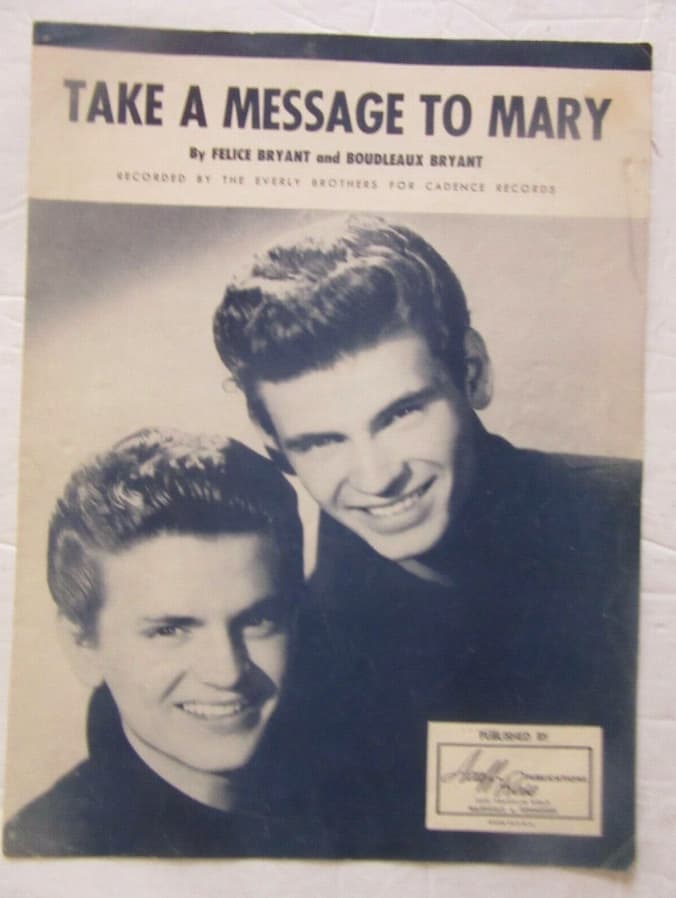
“Take a Message to Mary”: A Nostalgic Look at the Everly Brothers’ 1959 Hit
In the annals of rock and roll history, few songs capture the poignant blend of love and loss as effectively as “Take a Message to Mary” by the Everly Brothers. Released in 1959, this track not only showcases the harmonious voices of Don and Phil Everly but also reflects the era’s complex social mores and the personal struggles that often went unspoken.
The song, set against the backdrop of a mid-20th century America, tells a heart-wrenching story of love disrupted by unfortunate circumstances. The narrative focuses on a man who, imprisoned for an undisclosed crime, sends a message to his beloved Mary through a friend. Instead of revealing his grim reality, he concocts a tale of leaving to see the world, urging her to move on and find happiness elsewhere, a decision that underscores his deep love and self-sacrifice.
What makes “Take a Message to Mary” particularly compelling is not just its storyline but the emotional delivery by the Everly Brothers. Their melodic synchronization perfectly captures the dual themes of longing and resignation. This song spent 13 weeks on the Billboard Hot 100 chart, peaking at No. 16, while also finding significant success internationally—reaching No. 8 on Canada’s CHUM Hit Parade and No. 20 on the United Kingdom’s New Musical Express chart. Such statistics are a testament to the song’s wide-reaching appeal and the Everly Brothers’ significant impact on music listeners across the globe.
Lyrically, the song is a masterclass in storytelling. Each verse builds on the heartache of the narrator, culminating in the haunting revelation of his cold, lonely cell. This stark imagery serves as a powerful contrast to the initially romantic and adventurous facade he wishes to portray. It’s a narrative device that not only pulls at the heartstrings but also invites listeners to reflect on the themes of truth, deception, and the human condition.
The Everly Brothers, through their career, were known for their ability to convey deep emotional truths, and “Take a Message to Mary” is a prime example of their lyrical and vocal prowess. The song’s arrangement—simple yet effective—complements its lyrical depth, with gentle guitar strums and minimalistic production that allows the story and emotions to remain at the forefront.
As we look back on this track, it is clear that its relevance endures. It speaks to the timeless nature of certain human experiences—love, loss, and the choices we make in the face of adversity. For those who lived through its release, the song is a nostalgic reminder of the era. For new listeners, it offers a window into the past, showcasing the rich musical heritage of the 1950s and the enduring legacy of the Everly Brothers.
In sum, “Take a Message to Mary” stands as a poignant piece in the tapestry of American music, offering insights not only into the personal pains that often accompany love but also into the artistic expression of two of rock and roll’s most influential figures. It remains a compelling listen, resonant with the echoes of a bygone era that still speaks volumes today.